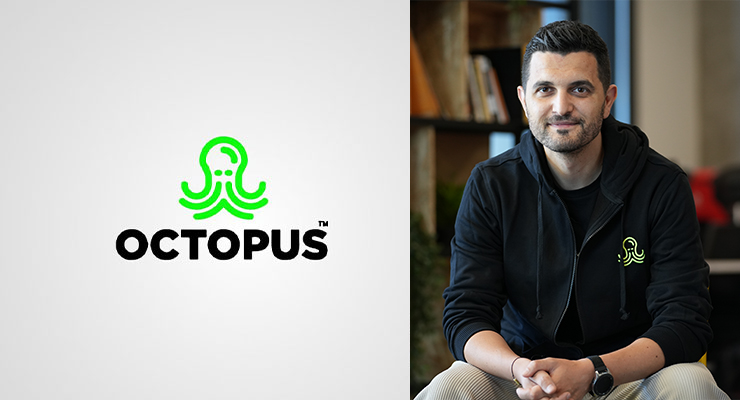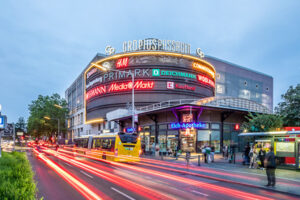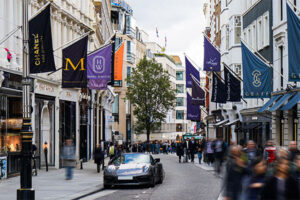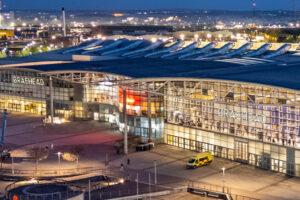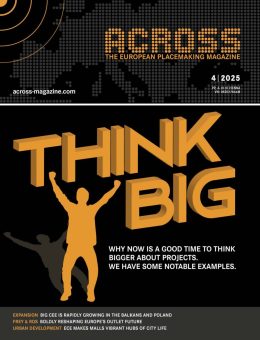Octopus is a new-generation retail tech company that brings the capabilities of the digital world to the offline world. It is an operating system (OS) that gathers all its products and services in a single center, and thanks to its many capabilities, it allows you to manage your screens from a single center, while helping you easily prepare your content. At the same time, it analyzes the data it collects thanks to its various analysis capabilities, supporting your sales and marketing goals and enabling you to communicate correctly with your customer base. With Octopus technologies, brands can obtain many services by working with a single service provider without the need for different companies and platforms.
Looking down at Octopus from a bird´s eye view, we can see different technologies all coming together to serve one core objective: providing brands with important data and insights on customer journeys. This allows brands to build flawless marketing strategies for their online world. Looking ahead, we are excited about our innovations that are set to revolutionize customer interaction further which includes integrating brand mobile apps with our displays, enabling recognition of app users as they enter a store, and presenting them with custom-tailored campaigns based on their app behavior. Octopus is not just creating technology; we are building an entire ecosystem that mirrors the online world’s interactivity in the physical world, all centered around our screens and the Octopus app. We are crafting an environment where digital engagement is as natural and intuitive as using a smartphone or computer.
CEO and founder Emre Yıldız on the benefits of Octopus for shopping centers
ACROSS: What are the advantages of your solutions for shopping centers?
Emre Yıldız: Our technology transforms physical stores into smart shopping areas. As an example, conditional content uses algorithms behind video analytics, which evolve through accumulated in-store data gathered from content views by certain demographics in store. If our system recognizes that a man has been interested in a particular product content in the past, it can showcase the same or similar products as soon as our system understands that the man is in the targeted demographic and places the content directly on the screen. It is a personalized touch just like social media’s tailored feeds. Another tech is our ‘lift and learn’ feature—when a customer picks up an item, the nearby screen instantly provides detailed information and can even offer custom deals. Additionally, our cashier integration acts as a smart recommendation system. By analyzing past purchase patterns, we can suggest complementary items available in stock, much like online shopping platforms such as Amazon. This way, we create a seamless and personalized shopping journey from entry to checkout.
ACROSS: How do retailers, as well as operators benefit from the solutions?
Yıldız: Retailers and restaurants and other industries that use screens often display similar content across various locations, yet each location usually attracts different and unique demographics. By analyzing which content captures more engagement, and how different visitors interact with it, Video Analytics provides brands with valuable insights. This enables them to refine their strategies location-wise, ensuring that the displayed content resonates well with the local audience and improves their in-store experience. It is not just about what content is shown, but about understanding the audience and catering to their preferences to keep them engaged and connected with the brand’s offerings.
ACROSS: Which challenge/problem is solved by your products?
Yıldız: In a shopping app on your mobile phone, you will see ads online based on items on your wish list. However, when you actually visit a shopping mall, the screens around you cannot know what you are looking for. This poses a big question mark for brands in understanding and analyzing what customers want. Octopus is a model for the retail world that enables us to convert customer behaviors into sales. Octopus stands out in the digital signage landscape through a unique blend of user-friendly technology and in-house innovation by our team. Our platform is as easy as downloading and using Netflix, compatible with 99% of screens. What truly sets us apart is our integrated ecosystem, all operating within our cloud-based framework. This means clients can seamlessly incorporate additional features like ‘lift and learn’ and video analytics, accessing comprehensive dashboards and customer data through one operating system. We eliminate the complexity of dealing with multiple vendors. Octopus is your one-stop shop solution for retail technology—enhancing customer experience with digital sophistication and delivering critical insights for businesses.
ACROSS: What requirements must be met in order to integrate Octopus?
Yıldız: Integrating into Octopus is incredibly easy. All you need is an internet connection and an Android or SoC TV. Afterward, all that remains is to download the Octopus application and use all technologies that are integrated into our cloud system.
ACROSS: How does a use case for shopping centers look like (e.g. Fiba Mall Adana)?
Yıldız: At Octopus, our approach for shopping centers like Adana M1 is to bring together all our technologies to create an interactive ecosystem where customers can engage with brands, and brands can leverage targeted marketing. Every screen within the mall is connected to our system and strategically placed in common areas according to foot traffic patterns through our video analytics technology. This helps us analyze customer behavior and interactions with branded content on each screen. Brands advertising here can understand which content performs best in specific areas, while providing them with accurate data-backed reports instead of relying on estimated footfall by the mall. This benefits the mall by increasing revenue from ads and gaining a detailed understanding of demographics and foot traffic.
Our next key feature is app integration. Brands or the mall itself can connect directly with customers using our screens through Bluetooth technology, delivering special offers and even processing payments directly on the screen. For instance, if we partner with Starbucks, customers entering the mall can receive a personalized message saying “Your next Frappuccino is on sale if you buy now.” since we know their purchasing habits from the app. However, all the data is anonymous. They can pay directly at the screen and head to Starbucks to collect their order. Similarly, if someone has Adidas running shorts in their basket on the app, and the Adidas store at Adana M1 carries them, our system can offer a time-based promotional deal, enabling the customer to pay immediately and then collect their purchase at the store. Think of the mall as a digital world, akin to a multi-brand e-commerce site, with our screens acting like smartphones or computer screens. The engagement, experience, and customer journey insights are all present in the physical world through our retail tech. We’re turning every screen into a dynamic tool for customer engagement, delivering a seamless digital experience in a shopping center.
Case Studies from the retail sector
Kiğılı
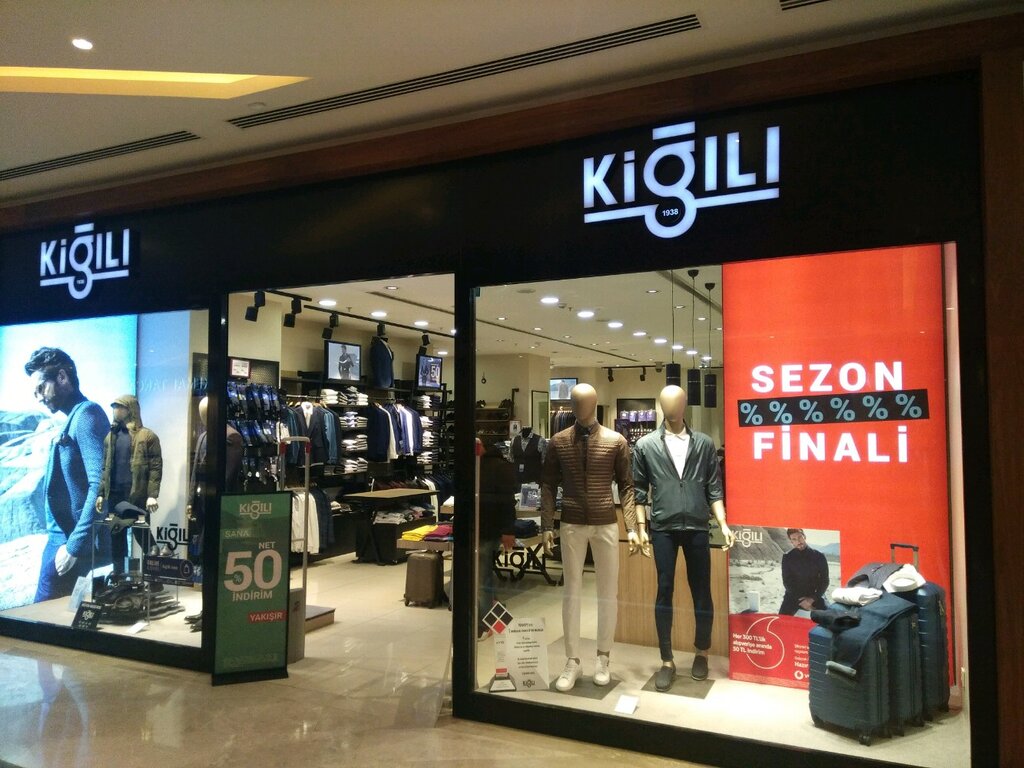
The Challenge: Kiğılı, a menswear brand, had over 200 screens supported by a central display management system. However, these systems proved inadequate in reaching their target audience effectively due to the brand’s focus on only men. With no means to measure the success of displayed content or receive feedback, marketing, and sales decisions were reliant on general opinions, leaving the accuracy of these choices uncertain.
The Solution: Octopus has introduced the Video Analysis service, incorporating the Conditioned Content feature, in Kiğılı stores. This strategic implementation allows Kiğılı to engage effectively with the target audience/visitors, ensuring communication happens at precisely the right moment for optimal impact while enabling thorough target audience analysis. As a result, the screens within the stores have seamlessly transformed into dynamic communication channels. This evolution plays a pivotal role in Kiğılı’s strategy, fostering the development of varied communication approaches tailored to specific branches.
Results Obtained: In branches where Octopus technology is implemented, Kiğılı conducts customer analysis based on real data. With insights derived from this data, the brand can establish highly effective communication with its primary target audience—male customers.
M&S
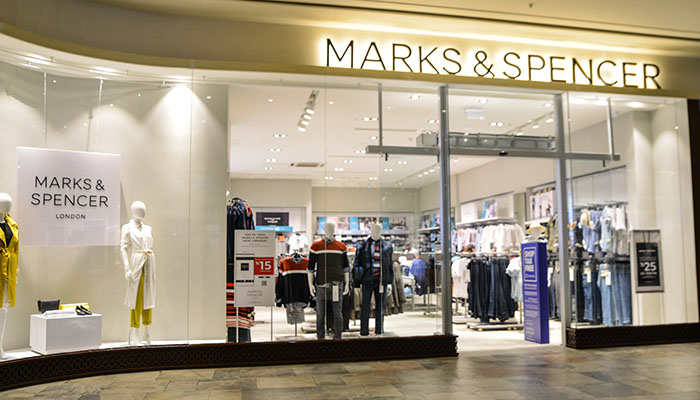
The Challenge: M&S uses big stores to show off their wide range of products to their customers. This makes it very hard for them to control what is going on in their huge stores. They had difficulties with understanding their customer´s behavior, like how much time they stayed inside or at which department they took their time the most, etc. Although they are very active in the digital world and understand which products in their catalog get attraction, they were unable to do the same in their stores/offline world.
The Solution: With Octopus Signage and its Video Analytics solution, M&S gains insight into the effectiveness of their campaigns displayed on screens, backed by detailed analytics data that includes a breakdown of demographics. Building upon this success, the project will expand to incorporate the Octopus Wi-Fi solution, enabling M&S to delve deeper into customer behavior within their stores. This extension will provide valuable information on specific areas of the store where customers spend the most time, enhancing their understanding of customer engagement and preferences.
Results Obtained: The project started with Octopus Video Analytics and will continue with Wi-Fi Analytics for customer behavior analysis. Despite being at a very early stage in the project, M&S has already started to collect very valuable, real daily data from their stores. They have just updated their marketing strategy based on the attraction data they’ve gotten from the content displayed on their screens.
Brew Mood
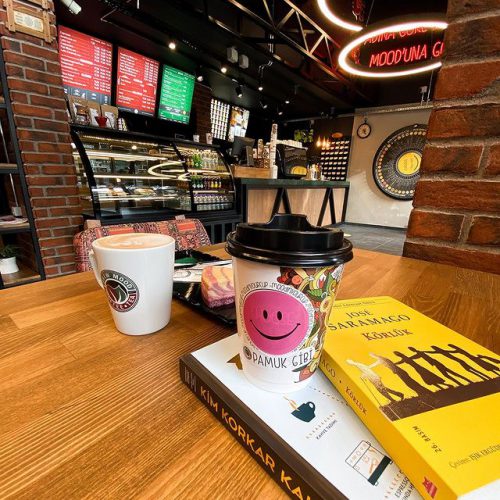
The Challenge: BrewMood relied on traditional paper-based menu boards, limiting their flexibility in showcasing new products and updating prices. The absence of technology hindered their ability to recognize the effectiveness of their content and provide reliable feedback to the marketing team. Despite acknowledging the diverse audience segmentation in coffee shops, BrewMood couldn’t sense it due to the lack of technological tools in their establishments.
The Solution: Octopus revolutionized BrewMood’s menu boards, starting the project with its main product, Octopus Digital Signage. This solution empowered BrewMood to effortlessly manage menu boards across their single location and multiple shops. Through Octopus Video Analytics, BrewMood gained insights into product attraction based on location and demographics like age and gender.
Results Obtained: BrewMood has gained more knowledge on their customers’ likes and needs for every single coffee shop. As a result, they obtain better results as they create their strategy based on the collected data. Now, they are able to involve their physical shops into their digital world, where they are more flexible, and their content is measurable.
